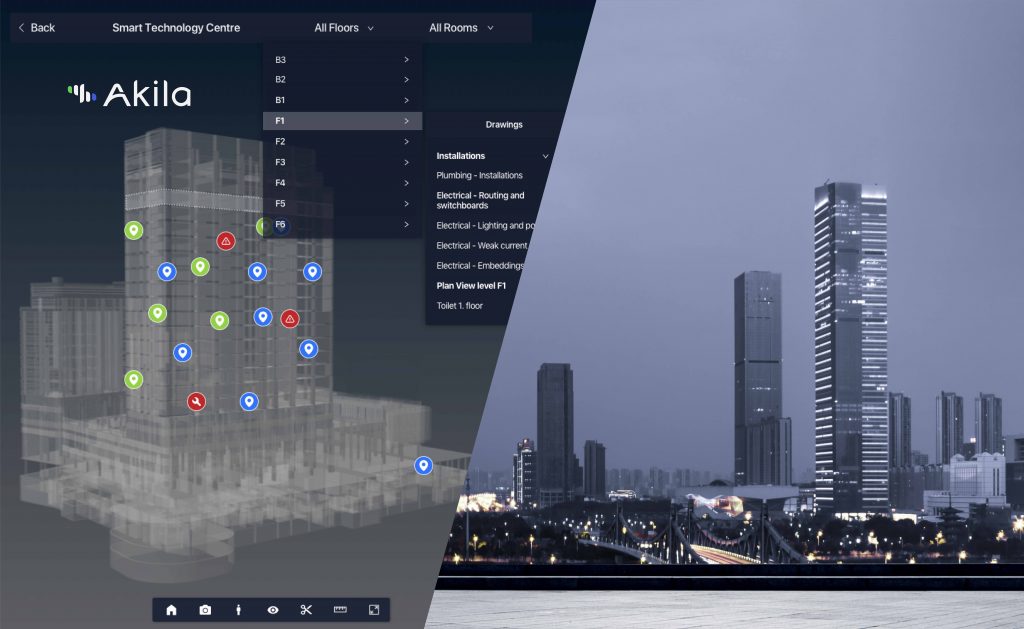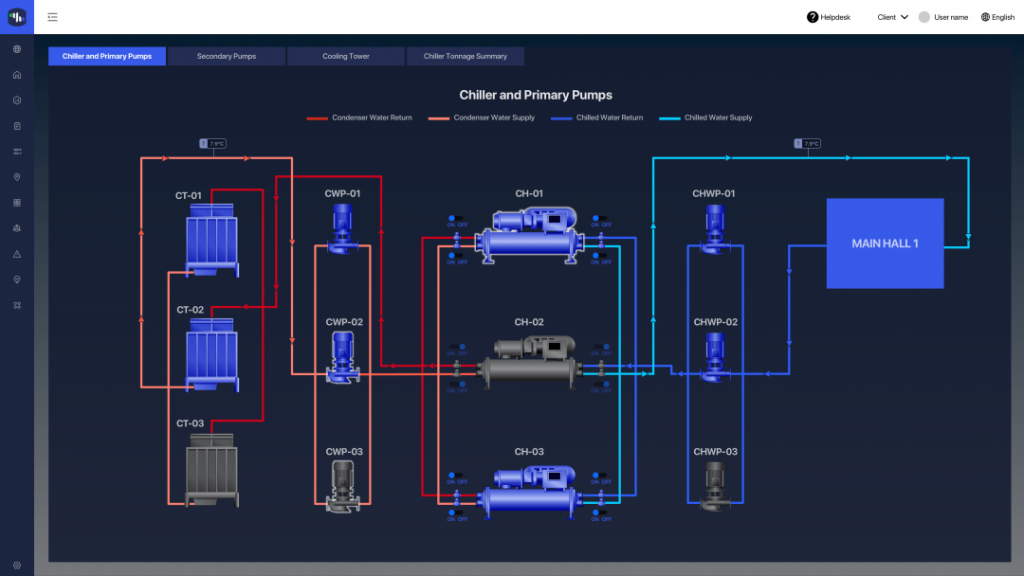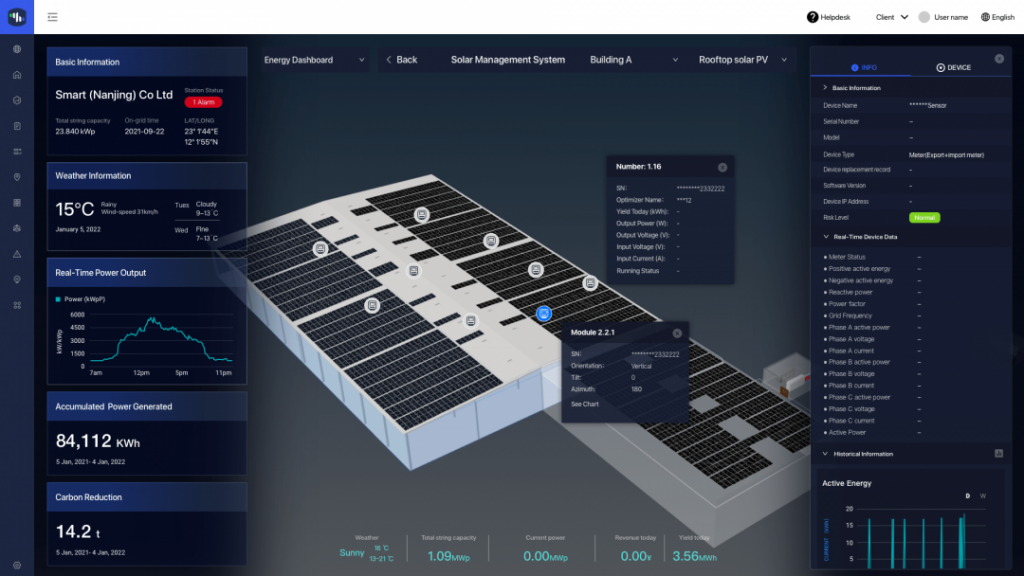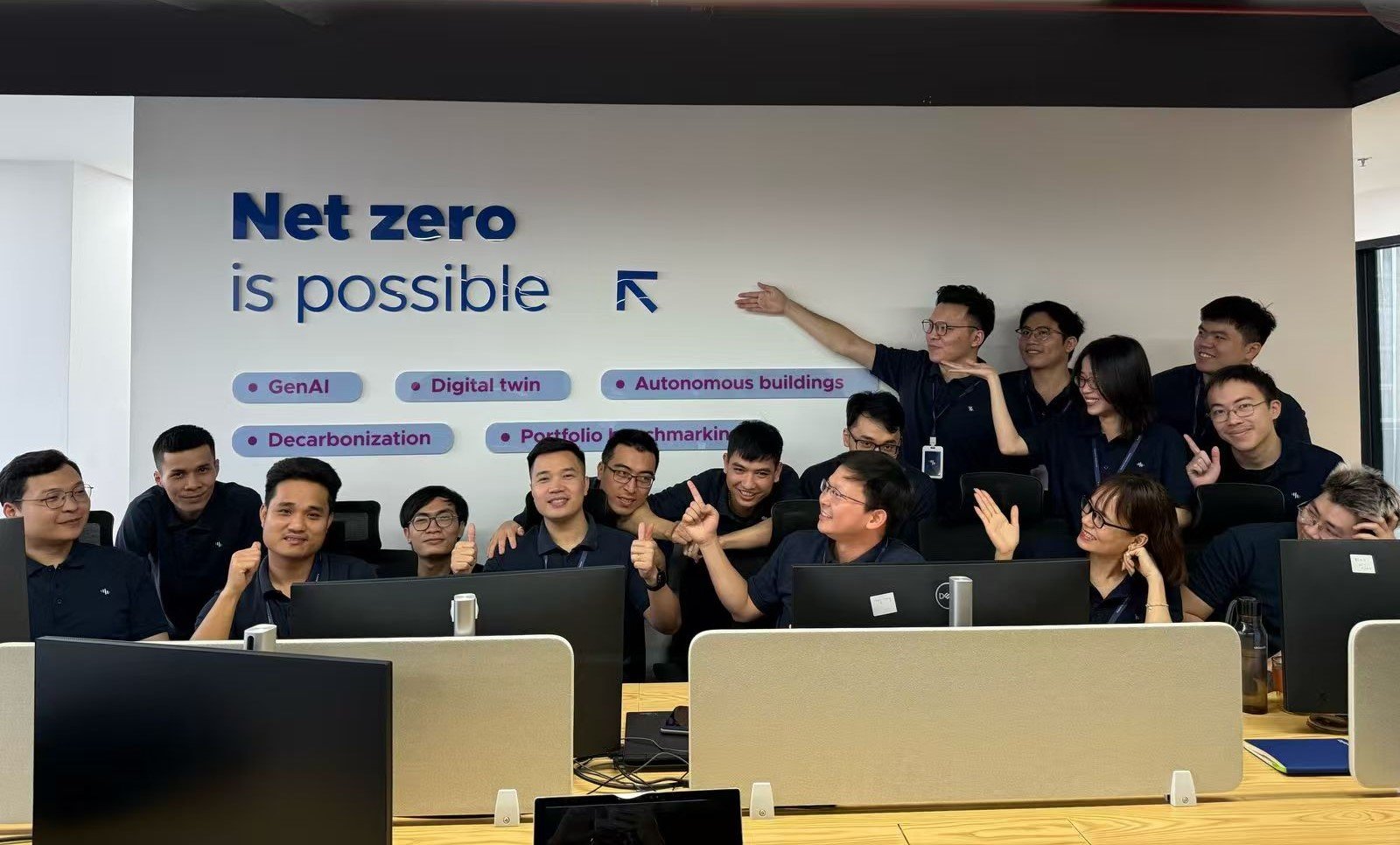
| Quick links |
| What is a BMS? |
| What is an EMS? |
| What is a CMMS? |
| What makes Akila different? |
Building automation has come a very long way over the years to become what we now refer to as “smart building” technology. Smart buildings leverage a whole range of technology solutions such as Building Management Systems (BMS), Energy Management Systems (EMS), Computerized Maintenance Management Systems (CMMS), and more to make the day-to-day operation of facilities more efficient.
These technologies have been able to achieve some amazing things on their own already: more control, less waste, better data, and more optimized operations and costs.
So, what makes Akila different?
In simple terms, Akila is bigger than any individual system. It is an all-in-one digital twin platform for buildings, integrating every system and sub-system into a single source – removing silos and contextualizing each part, process, and performance in relation to the whole.
The Akila digital twin is designed to work with a whole range of hardware and thus is much more flexible and customizable than typical BMS and EMS software. Furthermore, Akila can go beyond just linking all systems at the individual building level to include an entire property portfolio in the same platform. The level of deep data and scalable deployment provided by Akila is what our customers leverage to optimize ESG performance.
Let’s break it down by each different system to see where Akila excels versus traditional tech.
What does a BMS do?
A Building automation system (BAS), building control system (BCS), and building management system (BMS) are three terms that often get thrown around and can cause some confusion. They are the same thing. BAS, BCS, and BMS can all be used interchangeably to refer to the same technology.
BMS is a computer-based control system installed in buildings that control and monitors different systems in a building. The BMS system typically integrates multiple systems such as heating, ventilation, air conditioning, lighting, and security into a unified system. This centralized control allows for efficient management of the building’s energy consumption, improves the indoor environment, and helps to ensure the safety of the building’s occupants.

BMS functionality in Akila
The BMS can also be programmed to perform specific tasks automatically, such as reducing the operation of different subsystems during unoccupied periods, and can be accessed remotely for monitoring and control.
Systems controlled by a BMS include (but are not limited to):
- HVAC
- Steam
- Hot water and central heating (boilers)
- Cold water and cooling system (chillers)
- Fire protection system
- Electricity monitoring system (EMS)
The number of subsystems connected to the BMS, and the level of control can vary based on the needs of the facility. Most of the time, however, the primary systems controlled by a BMS are HVAC and electrical systems.
Akila vs BMS
Akila brings in the functionality of a BMS and goes even further beyond. We build upon the useful features of a BMS and pair them with a full-picture system that includes more in-depth looks at the inter-relation of different systems and the operations surrounding them. Akila then leverages this BMS data to help businesses meet their sustainability, efficiency, and ESG goals.
For example, when Akila was deployed in a multi-site project for Ikea China, the existing buildings were already using a BMS. These were integrated into the Akila platform, where the data was centralized along with other sub-system data to provide a full-picture look at the site’s performance. Using Akila as a single source of truth led to improved efficiency and a resulting reduction in energy use.
What does an EMS do?
An Energy Management System (EMS) is a software platform that monitors and controls an organization’s energy usage. The EMS allows organizations to track their energy consumption, identify areas for improvement, and implement energy-saving strategies. The system can integrate with various building systems, such as lighting and HVAC, to provide a comprehensive view of energy usage.
The best use of an EMS is to monitor systems and identify anomalies in energy use. An EMS can identify where and how energy is being wasted. It can measure energy use against a baseline and alert operators when it goes off track. It can also simulate energy use in different scenarios to help with planning operations or projects.
Akila vs EMS
Akila can provide all the functions of an EMS through just one software suite: Akila Energy. Akila Energy then works in tandem with other software and hardware (such as BMS and maintenance functions) to provide energy-specific data relating to equipment and operations. This also includes micro-grid assets, such as on-site solar panels and energy storage batteries.
One of the most important energy-related features of Akila is the ability to track energy savings and measure greenhouse gas impact based on Scope 1, 2, and 3 emissions categories. This information is critical when it comes to ESG reporting. Akila allows our customers to use the time normally spent on collecting data to act on improving their emissions impact.
 Solar microgrid management
Solar microgrid management
What does a CMMS do?
A Computerized Maintenance Management System (CMMS) is a software application used to manage maintenance operations and track equipment maintenance. The system provides a centralized database to store maintenance records, schedules, and history and enables the efficient planning and execution of maintenance tasks. CMMS can automate tasks such as work order generation, scheduling, and resource allocation, and can generate reports to provide valuable insights into maintenance operations.
By reducing manual processes and providing real-time data on maintenance activities’ status, CMMS can help organizations improve equipment reliability, reduce downtime, and lower maintenance costs. Additionally, CMMS can help organizations comply with industry regulations and standards, such as OSHA, by providing a clear record of maintenance activities.
Akila vs CMMS
Akila can also be used as a CMMS by maintaining asset registers and related maintenance plans, technical history, and inspection records. In the maintenance sphere, Akila is designed for practical usage, compliance, and direct work feedback from technicians (via the Akila App). By leveraging data captured from other software modules, third-party monitoring systems, and predictive algorithms (within Akila or from our partner ecosystem), the maintenance program can be adjusted in near real time to the actual condition of the built environment and its usage.
What makes Akila different?
The Akila platform encompasses all the systems mentioned above. It exists vertically above all of them – not adjacent to them. While Akila can accommodate these existing systems, and even help clients to set up the infrastructure for them, the real value is to bring all these data sources together into a single platform.
Using Akila as the single source of truth to contextualize all processes, systems, and data not only offers more transparency when it comes to reporting but also enables stakeholders and decision-makers to act more effectively. The goal of each one of these systems is to increase efficiency, reduce costs, or cut emissions or waste. Even if used to the full extent, most of these systems still exist in data or operational silos. Akila brings it all into the same playing field.
Furthermore, Akila is not limited to a single building. Akila’s full potential is unleashed when used to manage an entire portfolio. This is where the most value can be gained for company leaders. Akila can provide investment-grade data to be used for ESG and compliance reporting. It also allows the director and c-suite level decision makers to visualize how their properties are performing across an entire market, region, and globe at the click of a button.




